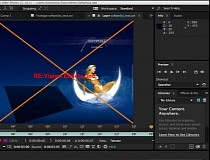

Then I pre-comp again (ctrl+shift+c), name it something with "Twixtor Input" and check "leave all attributes" again. If it changes framerate, you gotta do the following instead. Update: In case your clip is animated in a constant framerate for the whole duration, instead of the following, you can just simply set the "twixtor input framerate" to the appropriate framerate ("23.976/3" (roughly 8 fps) or "23.976/2" (roughly 12 fps)). This is also where the masking happens in case I use Twixtor pro, after I completed the following steps.
#After effects slow motion plugin twixtor pro#
This is where I apply Twixtor (or Twixtor Pro for difficult scenes), and set the "input framerate" to the exact framerate of the clip (and comp).

Then I open this newly created comp, it should contain your raw footage and have the exact same framerate and resolution as your clip. I name it something with "Twixtor Output" and check "Leave all attributes.". I import the raw footage into there, kind of put it in place, and then pre-comp it (ctrl+shift+c). Let Comp A be the comp where you want to do your "usual" editing in. Fast action scenes or badly animated scenes usually tend to look really bad when interpolated.įor Twixtor I developed a kind of motion-interpolation-workflow in After Effects that looks like this: That's the case when the scene already uses slow-motion or slow movement in general. I always look for scenes that don't change much between 2 different "redrawn" frames. There are only certain scenes that can be interpolated well, and moving hair usually indicates that it at least will be pretty difficult. Let me warn you that motion interpolation using Twixtor limits you really strongly in your scene selection.

Note that this is my procedure for using animated ("cartoony") footage only, using regular live-action footage or other stuff that is more true to it's playback framerate is way easier to handle and doesn't require most of the stuff I detail here. I originally planned to transform this to a fully fledged tutorial with pictures and examples and such nice things at one point, but I guess my limited time and my laziness will postpone such events into a distant future. So instead of continuing to answer every question from 0 again, here is the text I will link to everytime someone asks me again.
#After effects slow motion plugin twixtor how to#
I figured that questions about how to use Twixtor would not last for very long, but I was wrong. I started considering doing something like this a few weeks after Into The Labyrinth premiered, but have always been too lazy to do so. Check my much better guide by following this link.


 0 kommentar(er)
0 kommentar(er)
